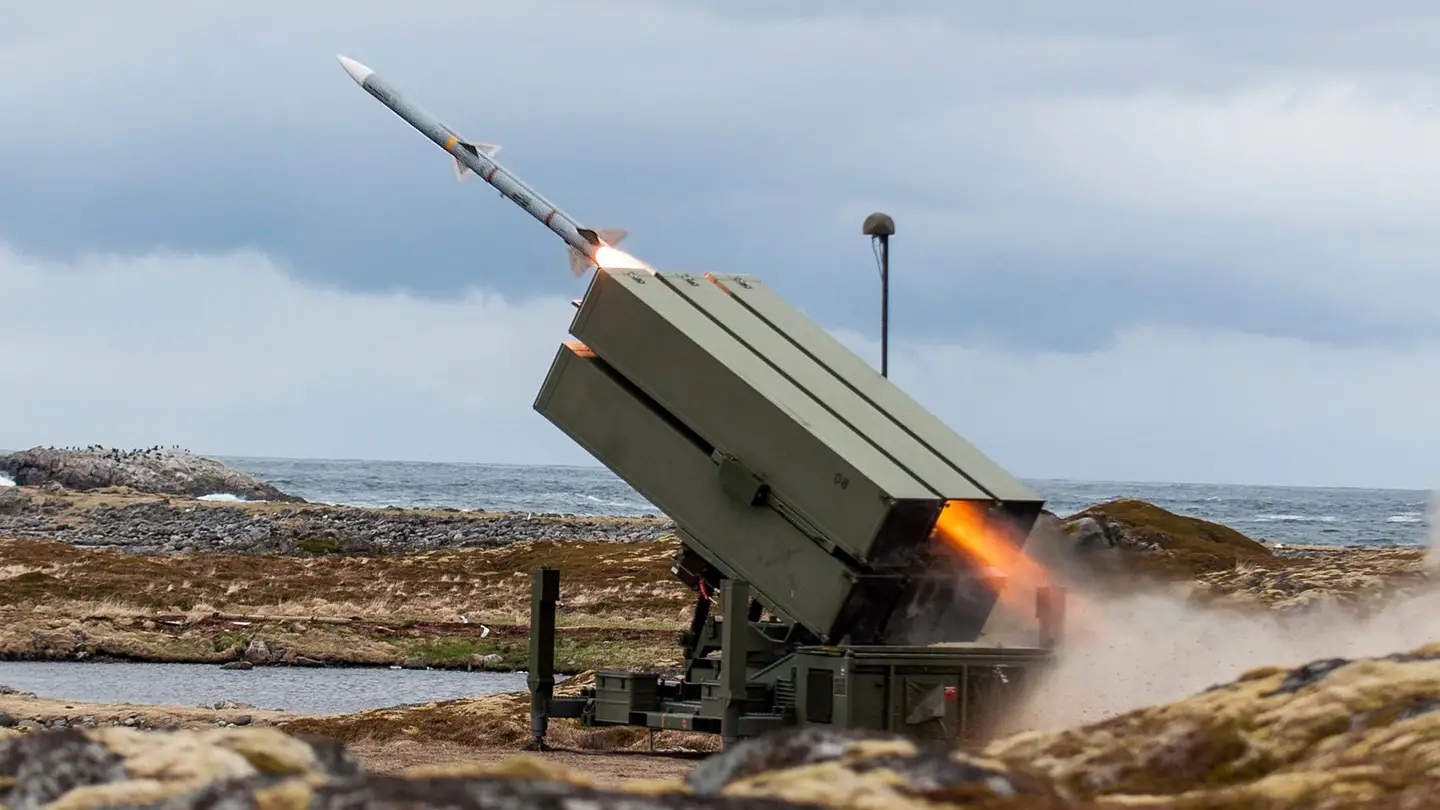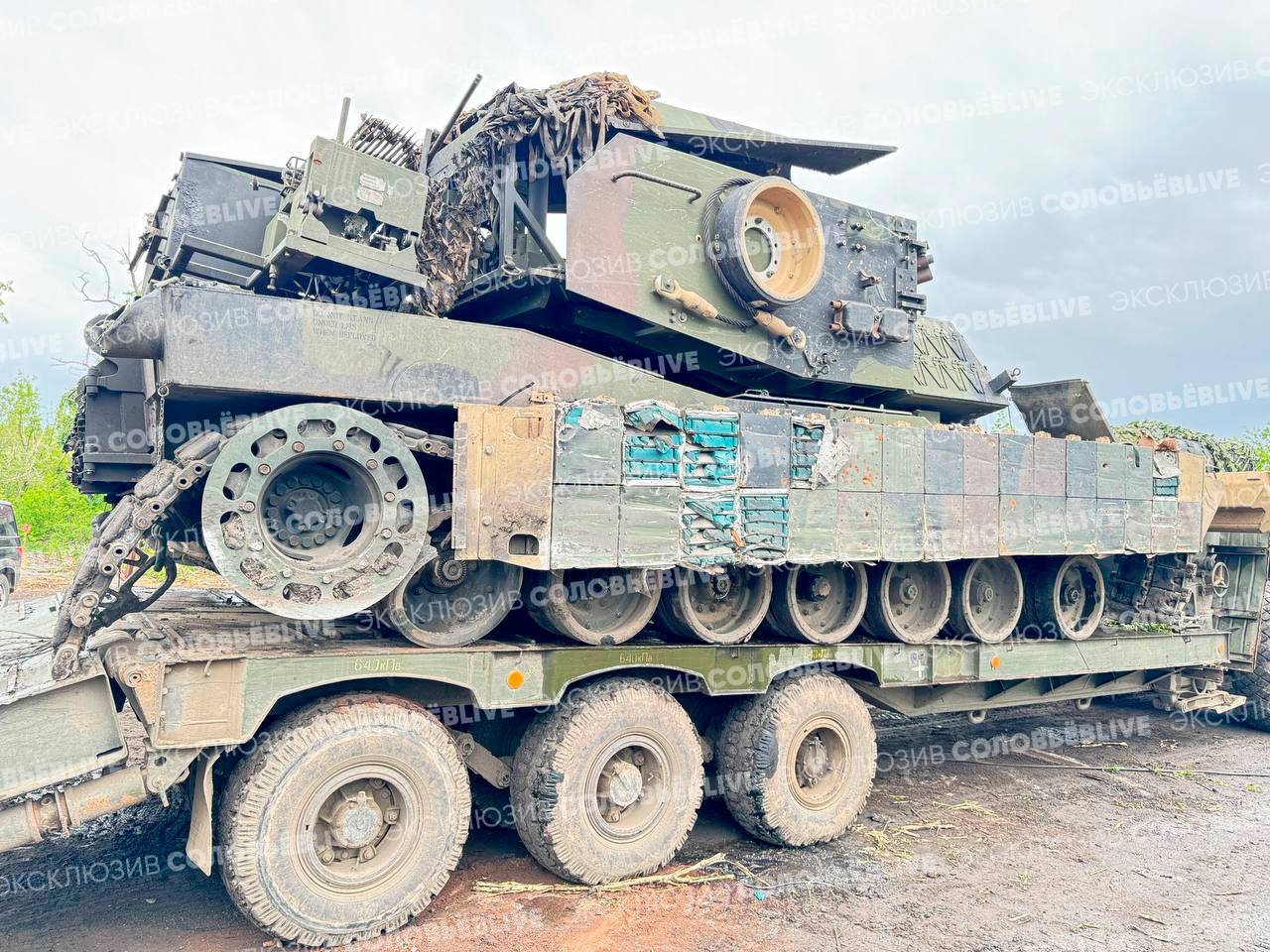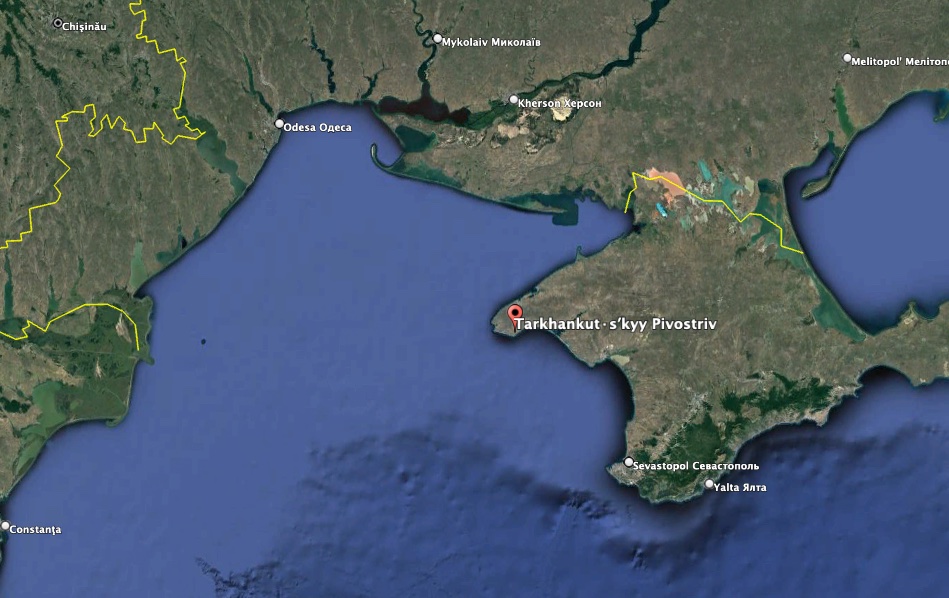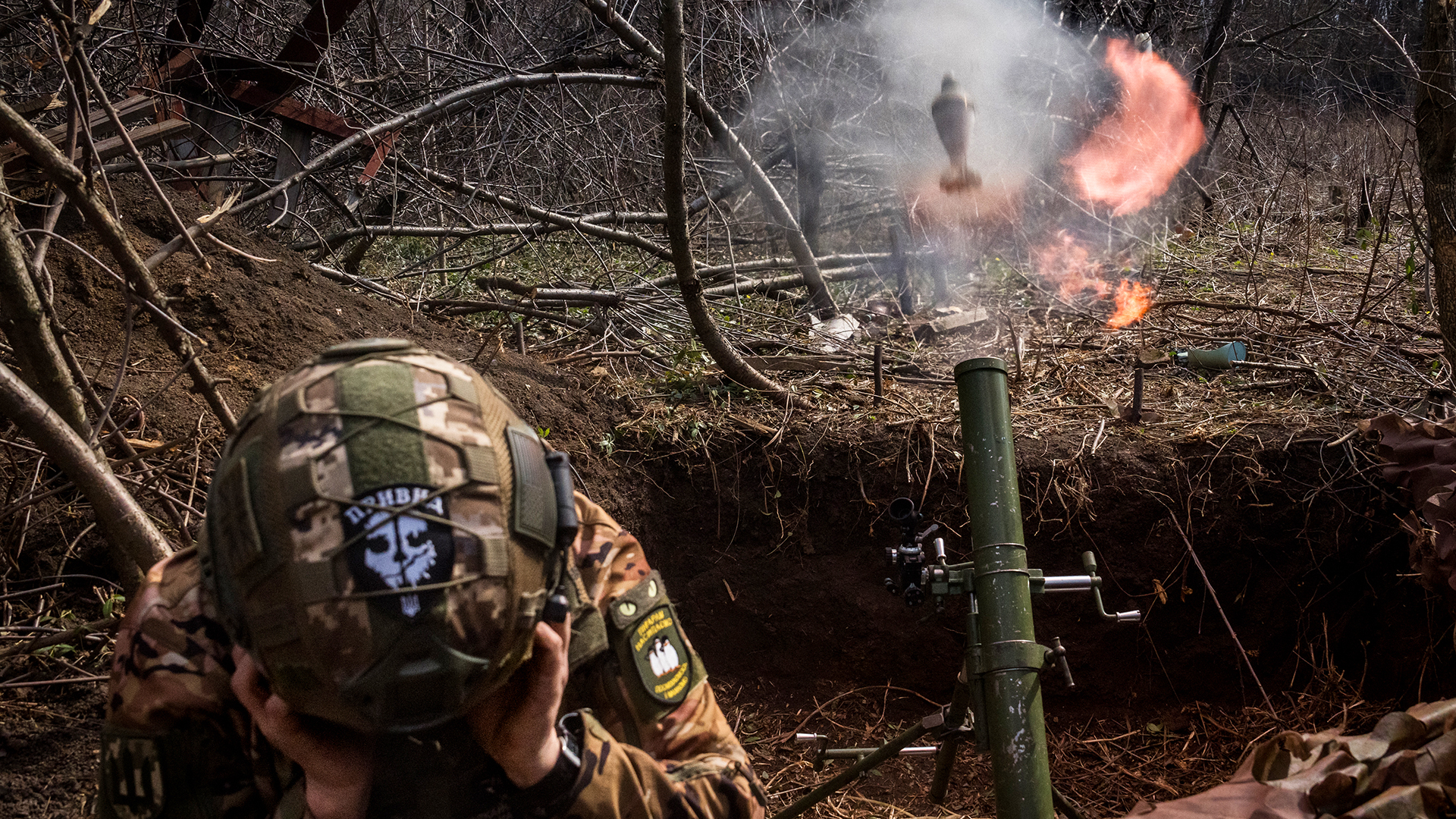As his military waits for the delivery of desperately needed military aid, the conditions on the front lines continue to “worsen,” Ukraine’s top military commander said in a blunt assessment.
Severe ammunition shortages are giving Russians the upper hand, Col-Gen. Oleksandr Syrskyi, commander of Ukraine’s Armed Forces, said Sunday on social media. That’s a deficit the U.S. tried to address last week with a $1 billion aid package that included artillery rounds, munitions for U.S. donated M142 High Mobility Artillery Rocket Systems, or HIMARS and air defense systems. It’s part of a $61 billion aid package for Ukraine signed into law last week by President Joe Biden.
“The enemy is trying to take advantage of its advantage in air, missiles and the amount of artillery ammunition,” Syrskyi said.
Russian troops “have captured or entered around a half-dozen villages on Ukraine’s eastern front over the past week,” The New York Times reported.
“The most difficult situation is in the Pokrovsky and Kurakhiv directions,” of western Donetsk Oblast,” Syrskyi said. That’s “where fierce battles continue.”
Those towns are about 25 miles northwest and southwest, respectively, from the fortress city of Avdiivka, which Russia captured back in February.

“The enemy deployed up to four brigades in these directions, is trying to develop an offensive west of Avdiivka and Maryinka, making its way to Pokrovsk and Kurakhovo. Units of the Defense Forces of Ukraine, preserving the lives and health of our defenders, moved to new frontiers west of Berdychi.”
The Institute for the Study of War’s assessment dovetailed with Syrskyi’s.
The ongoing “Russian stabilization of their salient northwest of Avdiivka presents the Russian command with a choice of continuing to push west towards its reported operational objective in Pokrovsk or trying to drive northwards to conduct possible complementary offensive operations with the Russian effort around Chasiv Yar,” the Institute for the Study of War reported.
Ukraine is facing increasing Russian pressure across the frontlines.
“Trying to seize the strategic initiative and break through the front line, the enemy concentrated the main efforts in several directions, creating a significant advantage in forces and means,” Syrskyi said.
Russia “actively attacks along the entire front line, in some directions – has tactical successes,” Syrskyi posited. Making matters worse, there is “a dynamic change in the situation, individual positions change ‘from hand to hand’ several times during the day, which gives rise to an ambiguous understanding of the situation.”

Russia is also eyeing a potential attack on Kharkiv, which Ukraine recaptured in September 2022.
“We are monitoring the increase in the number and regrouping of the enemy’s troops in the Kharkiv direction,” the general stated. “In the most threatening directions, our troops have been reinforced by artillery and tank units.”
Russia is also bombarding that city from the air, Ukrainian President Volodymyr Zelensky pointed out Monday.
The situation is tense as well, in Zaporizhia and Kherson oblasts, including where Ukraine launched its furtive offense last summer creating the Verbove-Robotyne salient. The Russians, he added, “still hope to knock out our troops from Krynyki, the small settlement across the Dnipro River in Russian-occupied Kherson Oblast where Ukraine has established a small presence.
The U.S. followed up that $1 billion aid package last week with another one valued at $6 billion, the largest so far. That included additional munitions for Patriot air defense systems and National Advanced Surface-to-Air Missile Systems (NASAMS), equipment to integrate Western air defense launchers, missiles, and radars with Ukraine’s air defense systems (the so-called FrankenSAM); loitering munitions and more artillery ammunition among many other items. However, unlike the previous package those will be provided through the Ukraine Security Assistance Initiative (USAI), which means they have to be purchased over the next few years.

Given the increasing Russian pressure, how much that equipment will help Ukraine by the time it arrives remains to be seen.
Before diving into more developments from the conflict in Ukraine, The War Zone readers can review our previous coverage here.
The Latest
Russia published video of a captured M1A1 Abrams main battle tank, the latest in a growing series of donated armor taken by Moscow. Of the 31 Abrams donated by the U.S., Ukraine has lost at least four, according to the Oryx open source tracking group. That figure could be higher because Oryx only tabulates equipment for which it has visual confirmation. It is also unclear whether this tank was one of the two previously damaged and abandoned Abrams.
Russia also recently captured an M1150 Assault Breacher Vehicle, an Abrams variant.

Russia put a number of its captured armor vehicles on display in Moscow today.
Russia, however, tried to make at least one of the captured armor vehicles look worse than it was, reportedly breaking the cannon and stabilizer drive of a donated Leopard 2A6 main battle tank.
Elsewhere on the battlefield, it is not all doom and gloom for Ukraine.
“The Defense Forces of Ukraine managed to improve their tactical position in the area of Synkivka (Kupyansk direction) and Serebryansk Forestry (Lymansk direction),” Syrskyi stated.
“In the direction of Kherson, our units managed to advance in the area of Veletenskyi and establish control over the island of Nestryga,” he added.
This is a tactical victory and will make it more complicated for Russian forces to advance towards Ukrainian positions, Dmytro Pletenchuk, a spokesperson for the Southern Defense Forces, told Hromadske Radio on April 29.
Beyond capturing that island in Kherson Oblast, Ukraine has reportedly continued striking targets in Crimea with Army Tactical Missile System (ATACMS) short-range ballistic missiles.
“Ukraine launched a number of attacks on Russian targets, including the air defense system at Cape Tarkhankut,” Radio Svaboda reported on its Telegram channel. Russian milbloggers “believe that a strike on the Crimean Bridge will soon follow – and the other side does not argue with them.”

As we have previously reported the bridge, Vladimir Putin’s prized $4 billion span linking Russia with the Crimean peninsula it seized in 2014, has been struck twice already. The first time was in October 2022 and then again July 2023, but never by long-range missiles.
The Kremlin-connected Rybar Telegram channel confirmed the attacks, though the extent of the damage is unclear.
“The Ukrainian Armed Forces also launched ATACMS missiles with a cluster warhead on the Crimean Peninsula,” Rybar reported. “The air defense position area located on Cape Tarkhankut also came under fire.”
In our previous coverage, we talked about why the frequently attacked cape is an ideal location for Russian air defenses:
“Cape Tarkhankut is the westernmost part of the Crimean peninsula, jutting out into the Black Sea. Olenivka is about 90 miles south of the front lines in Kherson Oblast and about 115 miles southeast of Odesa. It is clearly a highly logical and strategic location for a long-range air defense battery. Taking out this battery would potentially open a hole in Russia’s air defense overlay of the peninsula and the northwestern Black Sea. This could go a long way to ensuring the survivability of standoff strike weapons, like Storm Shadow and SCALP-EG, and other attacks, such as those by long-range kamikaze drones.”
One Russian expert recently confirmed those concerns.
“If we have holes in our radar lines into which 50 drones can fly over and over again and reach the target, then this is a very alarming sign,” Russian military expert Vladislav Shurygin said, according to Radio Svaboda. “In fact, this is a rehearsal for a big attack on Crimea. And the rehearsal is successful!”
Telegram channels also “reported a powerful explosion in Dzhankoi and the surrounding district in occupied Crimea on the night of 27-28 April,” according to Ukrainian Pravda.
Dzhankoi Air Base, home to multiple helicopters, tactical jets, and high-end ground-based air defense systems, came under Ukrainian attack earlier this month. You can read our previous reporting on the attack and the damage it inflicted here.
Last week, we wrote about how Ukraine has already received long-range ATACMS variants able to hit targets up to 186 miles (300 kilometers). Previous versions of the weapon sent to Ukraine were earlier types capable of significantly less range, of around 103 miles.
Defense Secretary Lloyd Austin last week indicated that there will likely be no restrictions on where Ukraine can use these weapons.
“So it’s up to them on how and when to use it, and our hopes are that they’ll create some pretty good effects with that and other things,” he told reporters when asked if the U.S. would still be concerned if Ukraine fired ATACMS inside Russia.
A top U.K official estimates that nearly half a million Russian troops have been killed or wounded since the all-out invasion was launched in February 2022.
“We estimate that approximately 450,000 Russian military personnel have been killed or wounded, and tens of thousands more have already deserted since the start of the conflict,” said Leo Docherty, Minister of State, Minister for the Armed Forces, according to the U.K. Defence Journal. “The number of personnel killed serving in Russian private military companies (PMCs) is not clear.”
Docherty was responding to a question about Russian losses from John Healey MP, Shadow Secretary of State for Defense.
Italy has apparently joined the United Kingdom and France in delivering Storm Shadow series air-launched cruise missiles to Ukraine. The news was broken by the U.K. Secretary of State for Defense Grant Shapps, who was speaking during a visit to the MBDA production facility for the weapons in the United Kingdom.
“It’s the U.K., France, and Italy positioning those weapons for use, particularly in Crimea. These weapons are making a very significant difference,” Shapps said, according to a report in the Times of London.
The United Kingdom was the first nation to supply the Storm Shadow to Ukraine, which has integrated it with its Soviet-era Su-24 Fencer strike aircraft, to significant effect. Subsequently, France transferred examples of its SCALP EG, a weapon that’s almost identical to the Storm Shadow and is also launched by Ukrainian Su-24s.
Italy had not previously been identified as a source of the weapons. The Italian Air Force uses the Storm Shadow on its Tornado strike aircraft, but these are in the process of withdrawal in favor of the F-35.
In contrast to France and the United Kingdom, Italy has generally taken a low-key approach when it comes to announcing any arms transfers to Ukraine. However, as of last month, official figures put the total value of Italy’s military transfers to Ukraine at 417 million Euros — equivalent to around $447 million.
A Russian missile attack on the Ukrainian port city of Odesa resulted in at least three killed and 20 injured, Mayor Hennadiy Trukhanov said on his Telegram channel Monday.
The attack struck the palace of students of the Odessa Law Academy, which is also known as “Harry Potter’s Castle,” according to the Kremlin-linked Rybar Telegram channel.
The city has been a frequent target of Russian attacks, including one last month while Ukrainian President Volodymyr Zelensky and Greek Prime Minister Kyriakos Mitsotakis were visiting. A Russian Iskander-M short-range ballistic missile reported landed 200 meters from where the two presidents met, killing five.
There are reports that the attack was carried out by an Iskander with cluster munitions.
Russia is attempting to add a new twist to its deadly arsenal of First Person View (FPV) drones. In the video below, you can see Russian troops testing out an FPV drone with a TM-62 anti-tank mine.
Satellite imagery shows damage to a military airfield in Kushchevskaya, Russia, about 125 miles from the front lines. It was attacked by Ukrainian drones, along with two oil refineries in Ilyinsky and Slavyansky of Russia’s Krasnodar Krai Oblast overnight on 27 April, the Ukrainian Ukrainska Pravda news outlet reported, citing sources from the SBU. The Kushchyovskaya military airfield is home to Russia’s 195th Training Air Base, formerly the 797th Training Aviation Regiment. It hosts a variety of aircraft, including Su-27, MiG-29, and L-39. The Russians train both their own pilots and foreign pilots there. For example, Iranian pilots were trained at this airfield on Yak-130 aircraft, Euromaidan Press reported.
Russian pilots were also trained to use UPMK winged glide bomb kits with FAB-1500 and larger bombs, aviation expert Andriy Romanenko told Euromaidan Press. “This airfield served as a combat training point for pilots to launch strikes with glide bombs, which explains the warehouse with guided bombs there,” according to the publication. Given the presence of those munitions, it is also likely that the base is used as a home for aircraft carrying out combat missions.
“The strike on this depot shows that many of the universal planning and correction modules that the Russians use to drop guided aerial bombs on Ukrainian ground forces have been destroyed. The [Ukrainian] soldiers on the front line will feel better for some time after the destruction of this ammunition depot, as they will be hit less often,” Romanenko said.
The imagery, from Planet Labs, shows the view on March 19 and again on April 28, indicating the airfield was damaged in several locations, and a Flanker-variant aircraft may have been hit. Video that later emerged from the airfield also showed damage to Russian glide bomb kits. These weapons have become a big problem for Ukrainian forces prompting notable shifts in that country’s air defense tactics.
The Russian Defense Ministry released new video a Russian Aerospace Forces Su-34 Fullback aircraft releasing FAB-500 M-62 bombs equipped with UMPK, or Unifitsirovannyi Modul Planirovaniya i Korrektsii, meaning unified gliding and correction module. These standoff weapons allow Russian aircraft to launch indirect attacks on targets that would otherwise expose them to unacceptable risk from Ukraine’s ever-evolving anti-aircraft defenses. You can see an image from that video below.
Planet Labs satellite imagery also emerged showing the results of the April 24 Ukrainian drone strike on the Rosneft oil depot in Razdorovo, Smolensk Oblast, about 180 miles from the Ukrainian border.
Comparisons of images taken before and after the attack show about a half-dozen oil storage tanks heavily damaged. According to the Kyiv Post, that attack and another on a fuel storage facility in Yartsevo, Smolensk Oblast, resulted in “the destruction of 26,000 cubic meters of Russian fuel.” The War Zone could not independently verify that claim.
With so many strikes on its oil infrastructure, Russia is turning to so-called cope cages on its oil storage tanks, similar to those used by both sides to protect vehicles and by the Russians to protect one of its submarines.
An image emerged on social media of a Russian Sukhoi Su-24M front-line bomber equipped with two RBK-500 SPBE-D 500-kilogram class cluster bombs. As we reported previously, “the SPBE-D contains 15 ‘smart’ anti-tank submunitions that are capable of searching for and zeroing in on their targets using built-in sensors. The weapon is similar in many respects to the U.S. Air Force’s Sensor Fuzed Weapon (SFW). Russian forces have also observed employing other wing kit-equipped versions of the RBK-500 in Ukraine in recent months.”
Given numerous Russian cruise missile attacks on its territory, Ukraine’s Air Force has used air-to-air missiles (AAMs) to shoot down those threats. It isn’t clear if this is a SAM or an AAM running down a Russian cruise missile, but it’s an extremely rare capture nonetheless.
A Ukrainian Air Force spokesman claims Russia used one of its Su-57 Felon new-generation fighters in a missile attack on Kryvyi Rih, according to Ukrainian Pravda. That’s Ukrainian President Volodymyr Zelensky’s home town.
“The missile the Russians launched was a Kh-59 or Kh-69,” cruise missile, Illia Yevlash, Head of Public Relations of Ukraine’s Air Force, said on national television, adding that “these missiles are difficult to tell apart in the air due to their similar tactical and technical qualities. Only when they are in the hands of experts can they be accurately classified and evaluated.”
You can read more about the Kh-69, which first appeared on the battlefield in February, in our deep dive here.
The Russians are taking great caution in how they use the Felon, Yevlash said.
“The Russians have already employed the Su-57 aircraft, but they are attempting to keep it at a safe distance since they are aware that it could be targeted by our air defence. This is a really pricey ‘rattle’ that they are protecting. It’s a unique and expensive toy for them.”
Reports about the combat deployment of Russia’s most advanced fighter jet began to emerge around January 2023.
A recent leak of documents hacked from the email box of a senior manager of Russia’s Alabuga Special Economic Zone allegedly reveal that Kaspersky Lab has been helping Russia develop its spy drones. According to InformNapalm, “managers of the Kaspersky Lab neural network development team created the on-board AI system for the Russian Albatross drones.”
InformNapalm, which describes itself as “volunteer intelligence community,” reported that it obtained the document from “hackers of the Cyber Resistance team.”
Kaspersky Lab is a Russian company specializing in the development of software and antivirus applications. Earlier this month, CNN reported that “the Biden administration is preparing to take the unusual step of issuing an order that would prevent US companies and citizens from using software made by” Kaspersky Lab “because of national security concerns.”
“US government agencies are already banned from using Kaspersky Lab software but action to prevent private companies from using the software would be unprecedented,” the outlet reported.
Iran has released video of an cruciform-wing drone that bears a resemblance the Russian Lancet loitering munition — a type of ‘kamikaze’ drone with an integral warhead that can loiter in a target area, before attacking its chosen target by flying into it and detonating.
As we have noted in the past, there has been increasing military cooperation between Moscow and Tehran, which has provided drones, the underpinning technology for the Shahed-136 family of those systems, and other capabilities. The Russian government has reportedly paid for those drones, at least in part, in gold. The regime in Tehran has also been working to acquire advanced Russian weapon systems, including Su-35 Flanker-E fighters, as part of exchanges in kind. Russia providing technologies for its own weapons to Iran in exchange for similar cooperation is very possible, although it isn’t clear if this is the case with the increasingly more capable Lancet.
A video camera attached to the nose of a Ukrainian Mi-24 Hind attack helicopter shows it speeding just feet over a highway.
And finally, Ukraine has become a testbed for counter-drone technology. Even cats are getting into the action, as you can see in this video below.
That’s it for now.
Contact the author: howard@thewarzone.com
